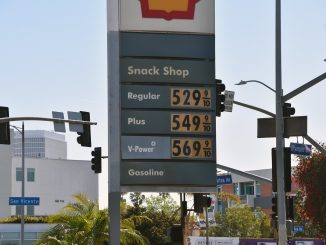

Last month, while sick with a particularly bad virus, I ordered take-out a lot. Over the course of two weeks, I barely cooked. I didn’t have the energy, and the minuscule amount I could muster was spent caring for my kiddo, who also was ill.
Suffice to say, my wallet took quite a hit. Dining out is a luxury. But then again, these days, eating in ain’t so cheap.
Once I recovered, I headed to my neighborhood supermarket to get the essentials for my favorite vegetarian chili recipe. Given my recent splurge, I was more cognizant of prices. And there it was: $2.99 for a 15-ounce can of corn. Corn! Beans were pricey, too. Luckily, I didn’t have to buy meat.
Shortly thereafter, I was shocked when the same chain grocery store was charging $11 for the pound of ground beef I needed for lasagna. All told, I spent around $28 on ingredients.
The past few years, as inflation and prices soared, I keep wondering how Americans are feeding their families.
Obviously, the surge in costs transcends groceries. Most of the essentials have skyrocketed, according to the Consumer Price Index. I suppose this wouldn’t be a problem if wages were keeping pace, but they most certainly are not. I’m especially concerned about my community, a place whose median household income of $59,000 is far lower than the minimum of $73,000 a year required for a family to live somewhat comfortably in Butte County.
In this economy, I keep thinking, This isn’t sustainable. Something’s gotta give. Yet, due to pent-up demand following the initial COVID shutdown, coupled with cognitive dissonance, Americans have staved off a financial crisis by maintaining spending habits.
At least for now.
Every few weeks I do an online search to see whether a downturn is imminent. I’ve been doing that periodically as far back as 2018, the year a post-Great Recession recession was predicted. It never materialized, but now, half a decade later, I can’t shake the feeling the other shoe is about to drop.
The first thing I do is turn to the experts. Problem is, the nation’s top economists don’t have the best track record of late. They wrongly predicted inflation wouldn’t last long, for example, and then it steadily rose for 20 months before peaking at a 40-year high in June 2022.
Sure, it’s come down, but prices remain high and are still increasing. The only relief—if you want to call it that—is that they aren’t going up as fast as they did during that aforementioned period.
As for the forecast for 2024, it’s pretty much impossible to get a straight answer. I’ve read predictions of catastrophic scenarios and casual warnings of a minor slowdown. Some financial experts aren’t concerned about next year at all. Seems these folks base their outlooks on arcane acronym-laden data that, quite frankly, even they can’t use to draw accurate conclusions.
But if you ask me, red flags abound. I say this based on indicators that are more relatable to the everyday consumer, including news that Americans are carrying near-record credit card debt—an average of $6,000—and delinquencies are rising.
Of course, the main problem is that people continue to pay more for goods, services and housing without the increased income necessary to make it all affordable.
Locally, among other things, that will include a PG&E rate hike of nearly 13 percent next year. And don’t forget corn. Well, maybe not corn specifically. The point is, a lot of people are having trouble putting food on the table (see Editorial). And when that’s happening, when Americans can’t meet their basic needs—food, water, clothing, shelter, etc.—there’s no doubt we have a cost-of-living crisis.
Melissa Daugherty is editor-at-large for the Chico News & Review


It would be interesting to know why food is getting more expensive. Are people being paid more to produce it? Is it in the cost of trucks to move the food from one state to another? Cost of fuel? Cost of wages? How much profit does a grocery store make? A chain? If we want everyone to do better, then everything will cost more, it seems. That said, we are lucky in Chico that we can eat all year round from the farmer’s markets, and while their prices have gone up, we should pay more for fresh unprocessed food.